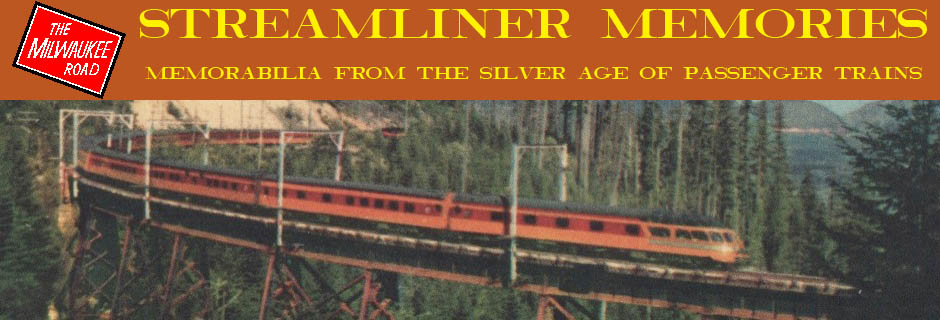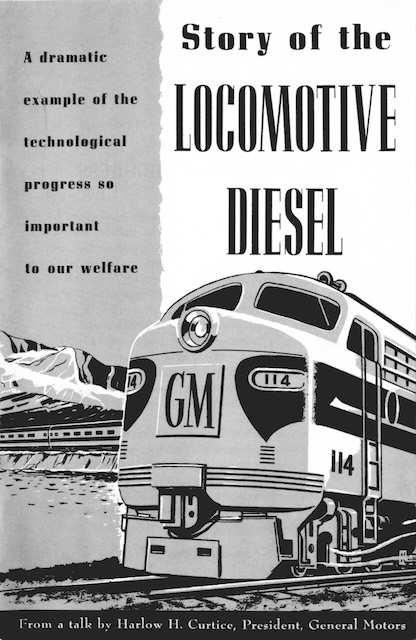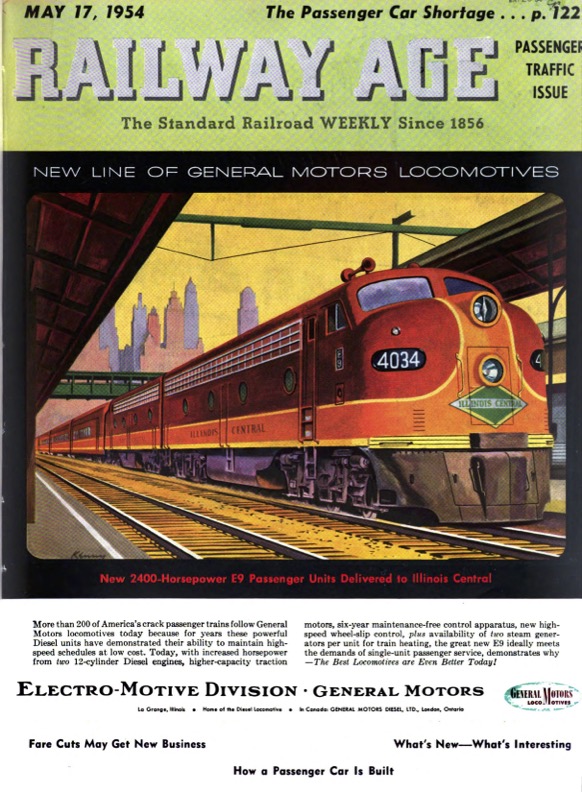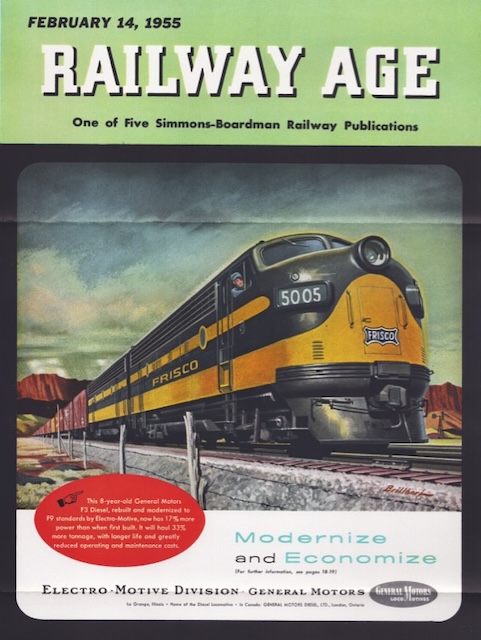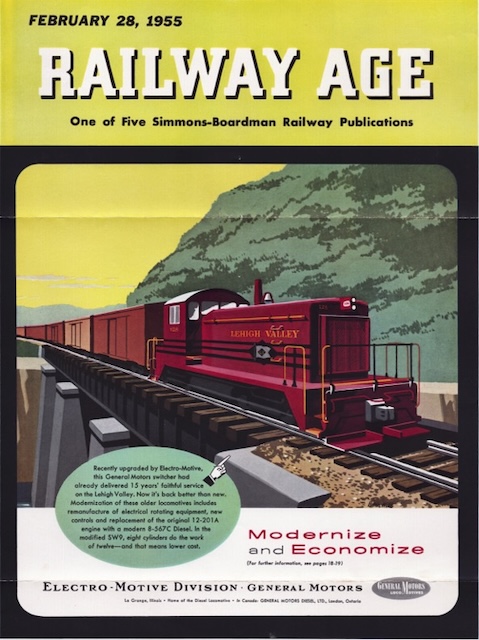Bern Hill has sometimes been listed as a General Motors artist. Of course, he never worked directly for General Motors; he worked for the Kudner advertising agency. But General Motors did have its own artists who worked for a department called the Art and Color Section. This department opened in 1927 and was headed by Harley Earl, who up to then had been designing custom automobiles for movie stars.
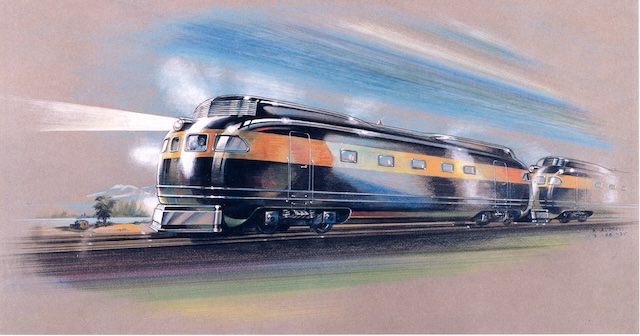
Dated March 28, 1935, this early locomotive design was painted by Paul Meyer. All of the images in today’s post were graciously made available by Greg Palumbo. Click image for a larger view; click here to download a 7.0-MB PDF containing all of the GM styling images in this post.
After Ralph Budd persuaded GM that its Diesel engines could power railroad locomotives, an important question was: what would such locomotives look like? To help answer this question, GM subsidiary Electro-Motive Company paid the Art & Color Section $55,000 a year for two of its artists: Leland Knickerbocker and Paul Meyer. Although EMC would locate in La Grange, Illinois, it appears that Knickerbocker and Meyer remained in Detroit. Continue reading
